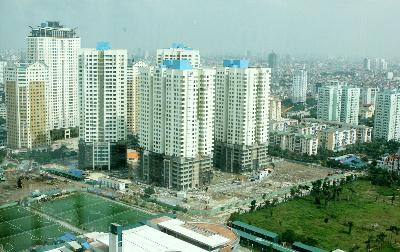The state contribution to a public-private partnership (PPP) project would not be restricted, according to the draft decree expected to be enacted at the year-end.
While Prime Minister Decision No. 71/2010/QD-TTg provides that the state contribution to a PPP project must not exceed 30 percent of its total investment, the draft says nothing about the state contribution limits.
PPP projects, as defined in the draft, means public investment projects to build roads, railways, airports, power plants, water supply systems, hospitals, etc., which are jointly implemented by investors from the state and non-state sectors and take the form of build-transfer (BT), build-transfer-operate (BTO), build-operate-transfer (BOT), O&M (operation and maintenance), build-transfer-lease (BTL), build-lease-transfer (BLT), etc.
 |
| SBV Governor Nguyen Van Binh and ADB Country Director Tomoyuki Kimura sign four loan agreements totaling USD 176 million for Vietnamese Government__Photo: Tran Viet/VNA |
In order to guarantee interests of parties to PPP projects, the draft suggested projects that show no prospects for capital recovery would not be implemented in PPP form. To answer the question of what is a feasible project, the MPI is working on a draft circular guiding the assessment of projects’ feasibility. Accordingly, projects would be assessed by independent consultants based on a set of specific criteria.
The draft also specifies that state funds would only be spent to build project works with a view to increasing the projects’ financial feasibility, for projects requiring recovery of investment capital; make payment for investors, for BTL and BLT projects; and build support works, and make compensation, ground clearance and resettlement. The value of public investment in a project would be considered on the basis of the public investment capital use strategy, the project’s financial plan and the capacity of mobilizing and arranging public investment capital to implement the project or pay investors as scheduled in the project contract.
In order to be funded with state investment capital, a PPP project must be on the list of projects promulgated by ministries, sectors or provincial-level People Committees or eligible for the use of ODA or concessional loans under international agreements or treaties. The project must meet conditions for use of public investment capital prescribed in the Law on Public Investment and, if it is commercially exploited, its expected revenues could not be enough to recover capital and make a profit.-






